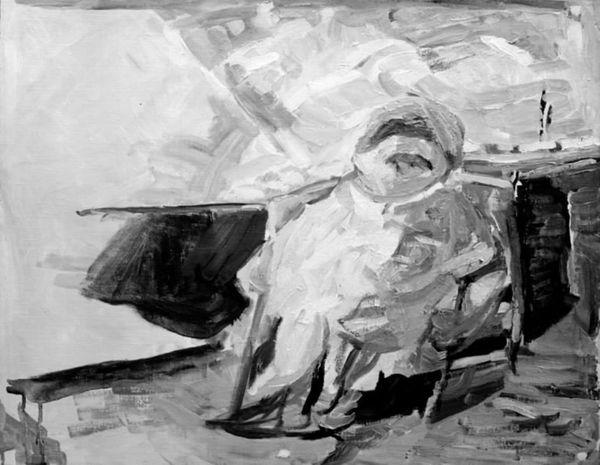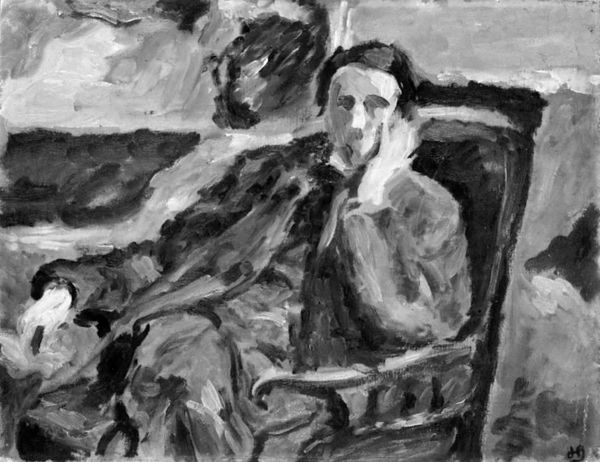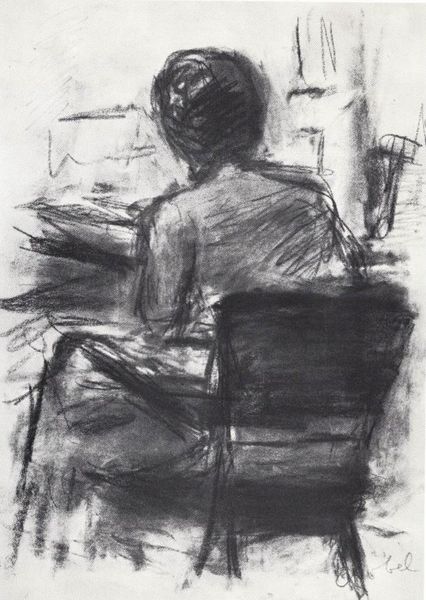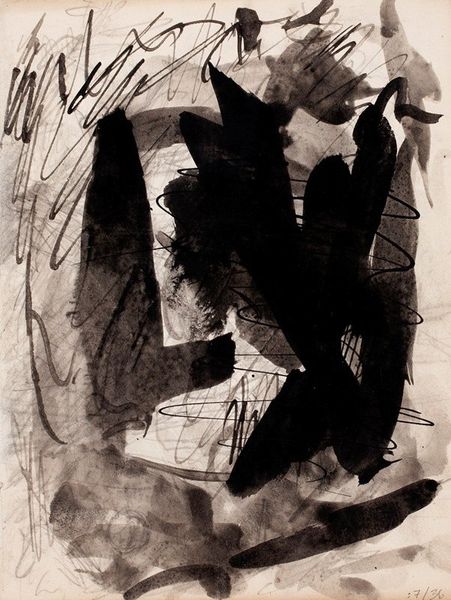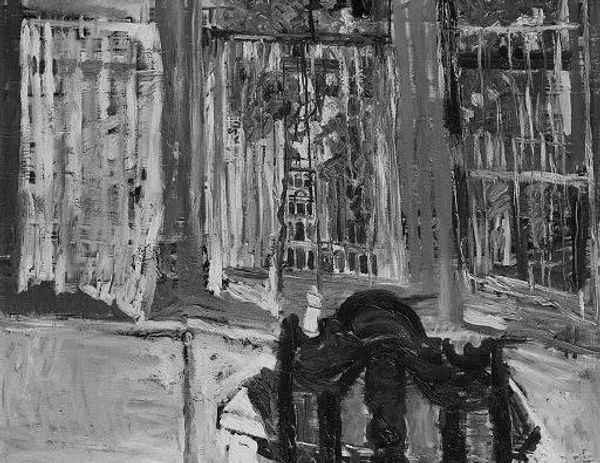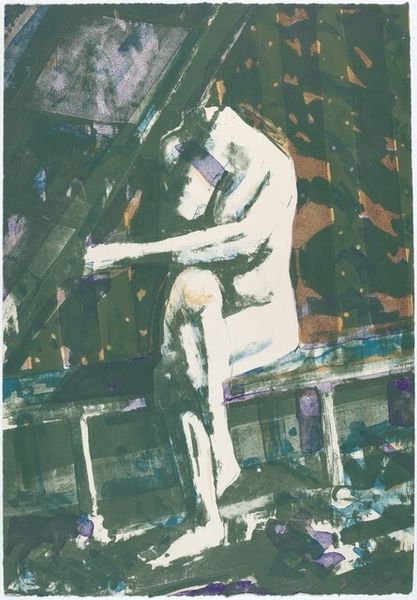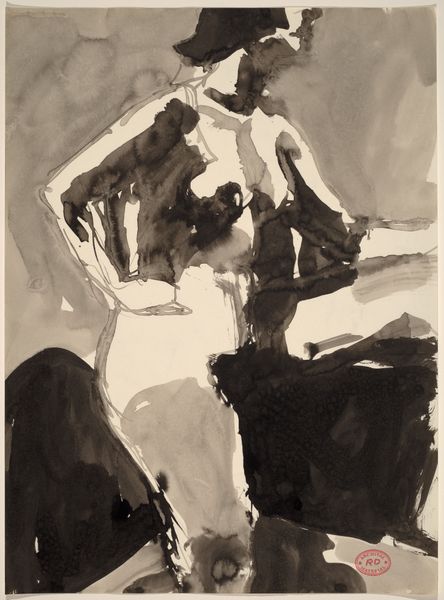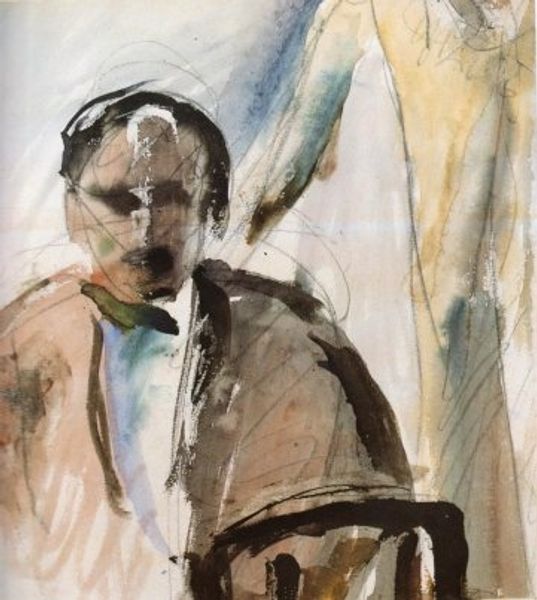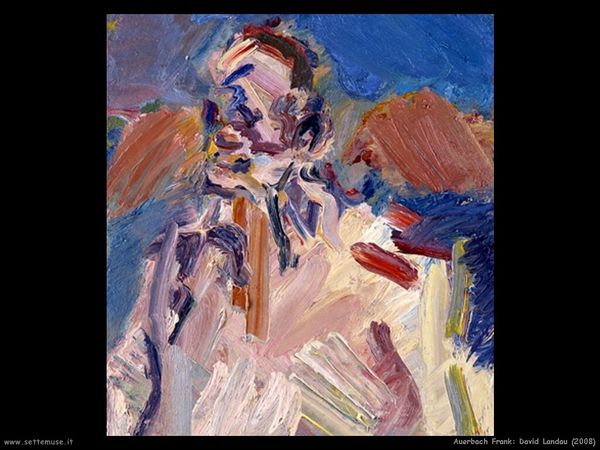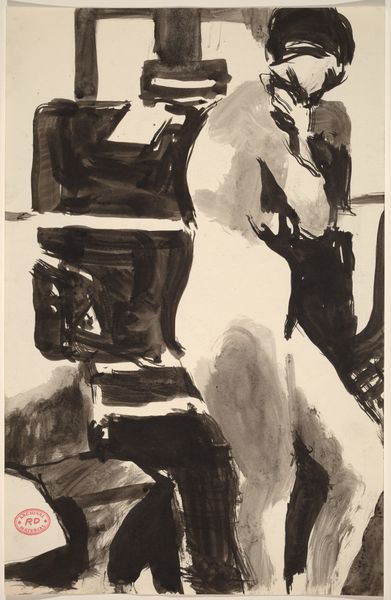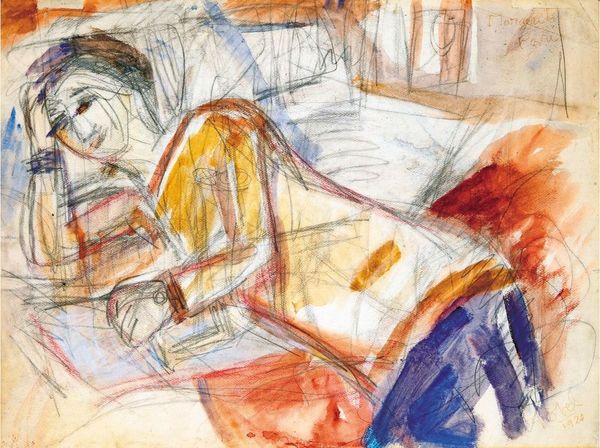
painting, oil-paint, impasto
#
portrait
#
painting
#
oil-paint
#
charcoal drawing
#
figuration
#
charcoal art
#
impasto
#
charcoal
#
modernism
Dimensions: 51.5 cm (height) x 67.7 cm (width) (Netto)
Curator: Welcome. We are standing before Niels Larsen Stevns’s “Interior with Figure,” painted in 1941 and currently held in the collection of the SMK, the National Gallery of Denmark. Editor: Well, my immediate response is its bold, almost brutal, use of monochrome oil paint. The thick impasto creates an intriguing texture that hints at movement, yet the restricted palette gives it an austerity that resonates powerfully. Curator: Indeed. Considering it was produced during the Second World War, we must look at the work through the lens of that socio-political context. Stevns’s muted palette, devoid of colour, mirrors the constrained and sombre mood of Denmark under Nazi occupation. Editor: I agree. The application of paint is crucial. You can almost see the labour, the building up of the image layer upon layer. It reminds me of a charcoal drawing, but pushed to its limits using oils. It's raw, less polished, making visible the choices and processes. Curator: The lack of detail certainly heightens the tension. It forces the viewer to confront the bare essentials, evoking a sense of disorientation, much like the disrupted social structures of the time. Was Stevns alluding to the loss of control and the ambiguous roles people found themselves forced into? Editor: Absolutely, and those visible brushstrokes underscore the handmade quality, rejecting any illusionism or high artifice. I feel that materiality provides insight into this figure's state. Consider also how the production and distribution of art would have been hampered during wartime. Curator: Yes. The figure is barely discernible. More ghostly presence than concrete form, the brushstrokes almost erasing them into the background. It speaks to the individual's vulnerability against larger historical forces, the potential anonymity imposed by war. Editor: For me, that almost anonymous figure speaks of the artist grappling with what painting is, what its purpose is. In 1941, the purpose of art had to justify the labour. Does that labor become a tool? What meaning can we extract, looking back on history? Curator: These questions about art’s role are perpetually relevant, especially during periods of social upheaval. It appears Stevns captured this beautifully and presented a potent social commentary. Editor: Precisely. What remains for me is that consideration of materiality and production reveals meaning far beyond its stark surface.
Comments
No comments
Be the first to comment and join the conversation on the ultimate creative platform.
